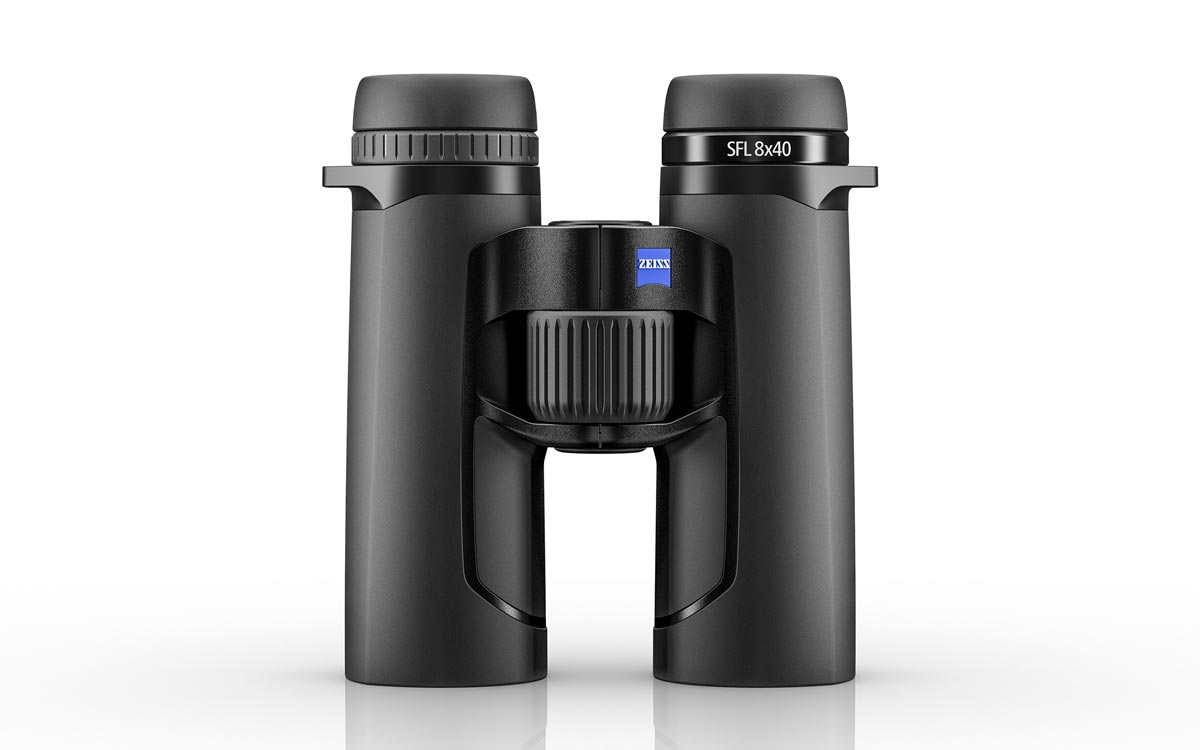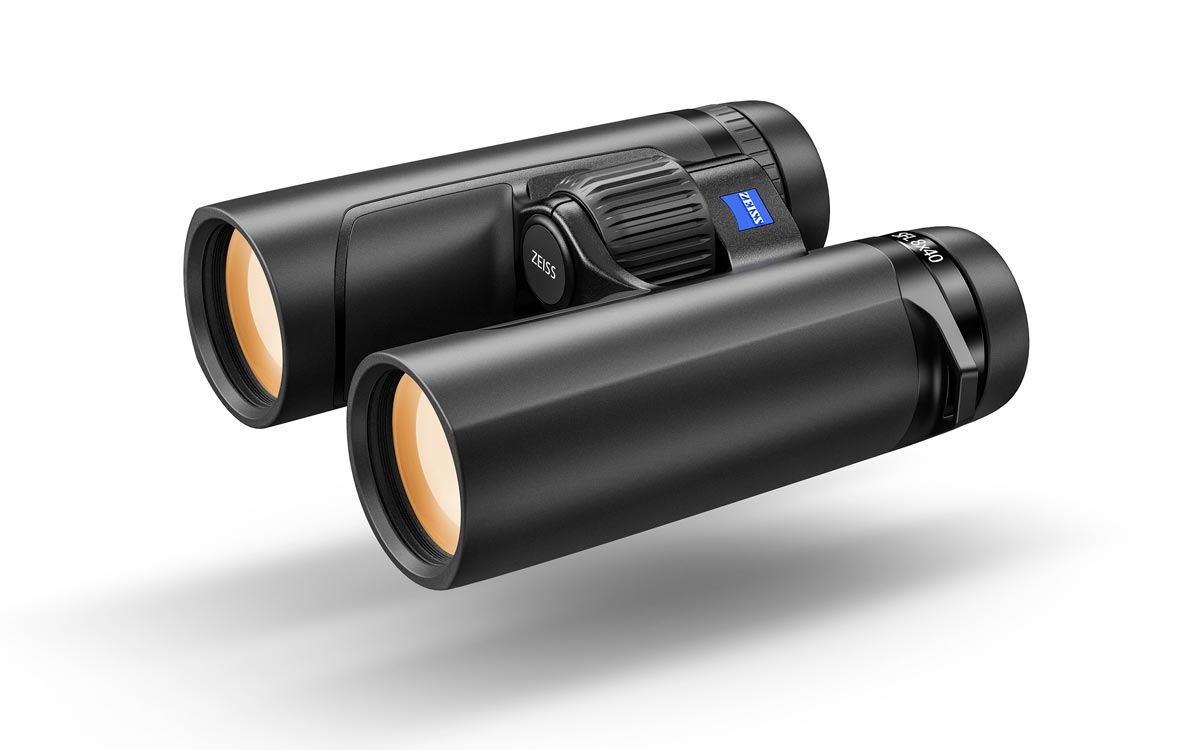ZEISS Victory SFL 8x40 binocular
This month witnesses the launch of a new ZEISS binocular which, with shedding weight as the key objective, sees the 'refortification' of two models that involves a move away from standard 42 mm objectives. Casting a critical eye over the current optics market, there are already indications to suggest we are on the cusp of a forthcoming trend. And why not? Given the technological improvements in recent years, which have delivered an increase in light-gathering capacity, larger objectives are perhaps no longer assuming the same level of importance as they once did.
The SFL epithet, an abbreviation of 'Smart Focus Lightweight', takes its cue from the already popular, larger Victory SF models at the top of the manufacturer's range. The 2 mm reduction in the diameter of the objectives has made possible the use of thinner, more closely spaced glass elements, which broadly translates to a reduction in the binocular's weight by up to 20% and in its volume by up to 13%, compared to the larger Victory SF models.

To put some figures to this, the new model weighs 640 g, as opposed to the 790 g of the larger SF binocular. There are other obvious differences, too. Physically, the fact that it is some 29 mm shorter in length means it requires only a double, not triple, link bridge. The dioptre adjustment has also been repositioned on the right ocular, away from the central focusing system.
Technically, under the hood, the prisms are the same Schmidt-Pechans used in the SF and the light transmission figure is given as 90%, compared to the SF's 92%. The field of view, though a highly respectable 140 m at 1000 m, is down from the SF's equivalent 148 m.
All of these differences have also conferred an added bonus insomuch as the suggested retail price of the SFL is significantly lower than that of its larger congener. We're looking at £1,550 versus £2,359 – that's a big and positive difference!
I did not have the opportunity to carry out a side-by-side comparison but in trialling the 8x40 SFL it performed very well in the field. It's well balanced, the magnesium chassis simply covered with soft, non-slip rubber and is, of course, light, while delivering the immediate impression of an all-round smooth operator.
Perfectly positioned so as to allow your operating fingers to be kept comfortably straight, the focusing wheel is shrouded with broadly ribbed, non-slip rubber and is approximately one-and-a-half fingers' width. It turns freely and smoothly, as well as offering a rapid response to focusing. I found little more than 1.25 clockwise turns took the image from the manufacturer's figure of 1.5 m close focusing distance to infinity, while only a fraction less than a quarter of a turn swiftly moved the image in focus from 10 m to approximately 500 m.
The dioptre adjustment wheel also turned smoothly and I discovered it was not necessary to raise the eyecups to operate it. The latter are soft, comfortable against the eye and they twist out to three click-stop positions above the base setting, and I was pleased always to be able to see the full field of view, regardless of their position.
Field edge curvature was minimal and, although the image was nicely sharp, it tended to struggle in maintaining this sharpness at the very edges. Chromatic aberration was also minimal and almost absent from the centre of the image, although it was detectable in the image's outer thirds.
The image quality was, however, superb. Crisp, bright, vivid, contrasty and oozing natural colours. All of these were reflected in the wonderful chestnut, buff and orangey hues in a fabulous summer-plumaged Bar-tailed Godwit I spent some time watching during testing on one of my local patches. The SFL also maintains a nice, clean '3D' effect, which becomes evident when watching birds in woodland.

While not part of the optics proper, I was highly impressed with the truly innovative and unique objective lens covers. In its design, ZEISS has gone way beyond the simple, often shoddy-looking and frequently impractical, loop-over covers we have become used to seeing on the vast majority of today's binoculars. The elegantly crafted 'loop' is broad and mirrors the contours of the binocular chassis, fitting both tightly and neatly around the end of each lens housing, as well as slotting over the rims. This means that, once fitted, they appear as part of the chassis, as well as offering additional protection to the body and the objectives themselves.
The SFL also comes with an articulated rainguard, a comfortably padded lanyard and a soft, though sturdy, carry case.
In conclusion, while retaining many of the laudable attributes of the existing SF, the SFL is a very different animal and has the added benefit of that all-important lower price point. Try it out!
Further info
- Price: £1,550
- Size: 144 x 114 mm
- Weight: 640 g
- Field of view: 140 m at 1,000 m
- Light transmission: 90%
- Close focus: 1.5 m
- Gas-filled: yes
- Waterproof: yes
- Guarantee: 10 years
Verdict
+ Impressively lightweight and compact
+ Crisp, bright and vivid image colour
- Some chromatic aberration in the image's outer third


